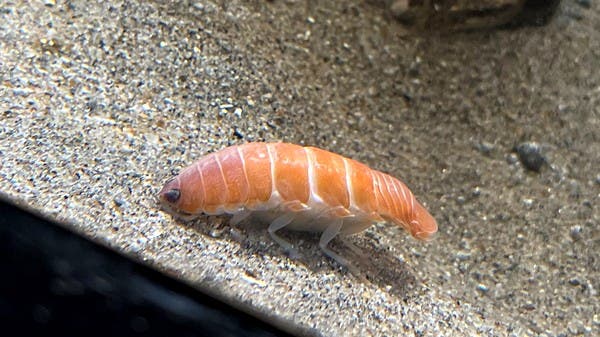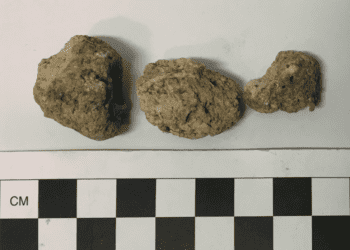
One of the most popular attractions at the Aquamarine Fukushima, a large aquarium in eastern Japan, is oddly enough a sea parasite that looks like a piece of salmon sushi with 14 legs.
The inch-long creature belongs to an order of armored-plated crustaceans known as isopods, which are plentiful both on land and sea. The spineless creature is related to crabs, shrimp, lobsters, and other actual seafood you might see on the menu of a sushi restaurant.
The sushi-shaped superstar at the Aquamarine Fukushima likely belongs to the Rocinela genus, home to more than 40 species. While most isopods feast on dead or decaying animals, Rocinela members tend to be parasites that piggyback on sea creatures and consume their tissue for food.
But while the vast majority of isopods look rather dull and brown in color, the cutest parasite in a Japanese aquarium sports a bright salmon-like color. The specimen was recovered from waters off the coast of Rausu in Japan’s northernmost island Hokkaido, at a depth of 800 to 1,200 meters. Its bright color may be owed to pigments and other substances consumed in the fish it hitched a ride on.
We may never know what animal the isopod was feeding on since the fishermen caught it in a gillnet. Whatever it fed on, though, it must have offered a plentiful bounty judging from the isopod’s protruding belly.
“Its belly is still swollen, which means it’s probably full from when it was still a parasite and feeding on another animal. When its belly gets flatter, that means it’s hungry,” Mai Hibino, a caretaker at the Aquamarine Fukushima, told VICE.
While the sushi-like creature on display at the aquarium has captured the hearts of thousands of visitors, isopods are no joke — they’re quite gruesome parasites. For instance, while scanning the head of a fish, Rice University biologist Kory Evans was startled to find an isopod inside. The parasite had eaten and replaced the tongue of the fish.






